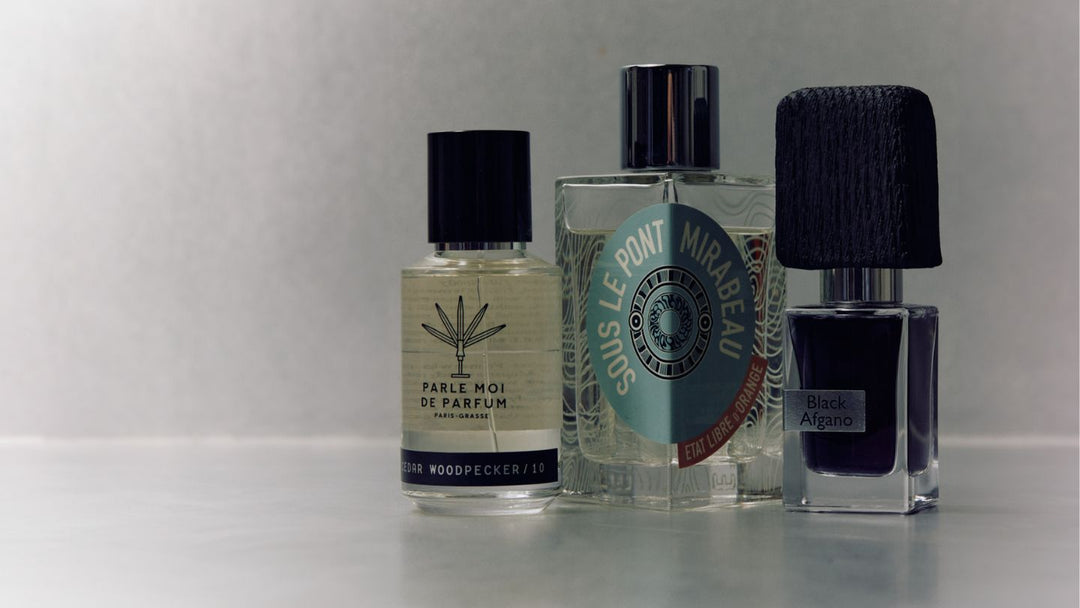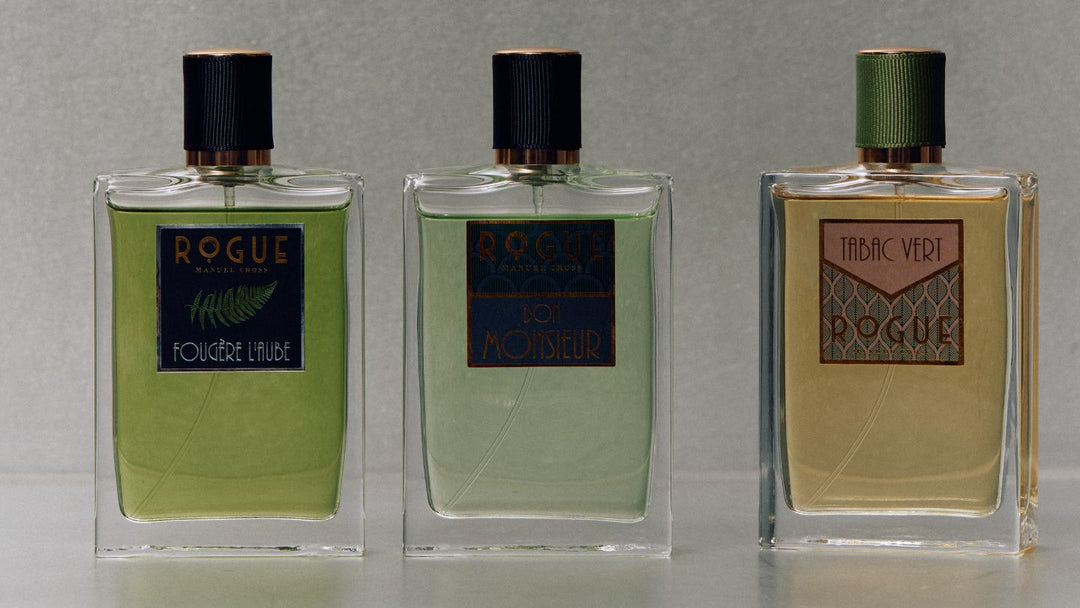The Philosophy of Nasomatto: A Close Look at Black Afgano
The mystique of the Nasomatto brand stems from its deliberate decision not to disclose the notes of its fragrances. Alessandro Gualtieri offers only what is required – just enough to start off this journey of experiencing the fragrance, insisting that the perfumes should be experienced as a whole, arousing a temporary bliss in the wearer. Perfumes dissected into their parts put the individual at a distance, diminishing the complete impact of a scent that is allowed to confront the wearer and live alongside them, with what Gualtieri says is “an intelligence of their own”.
In this sense, these perfumes become mythical objects, insulated from interpretation and retaining their mystery: they speak for themselves. Nasomatto perfumes are visceral expressions – outbursts according to the mania of the creative process. Gualtieri gives birth to life, and respects the fact that it is a life entirely of its own.
Without disregard for Gualtieri’s quest for euphoric experience, the indeterminate nature of his fragrances result in an altogether different delight of interpretation. Is this not a fundamental part of the human experience - to approach things, intent upon appreciation? Gualtieri’s creative signature, with a tendency to lean on a certain palette of ambery-woody molecules leave an unmistakable imprint on his fragrances. And so, although Gualtieri gives birth to autonomous fragrances, they no less wear the mark of their pater.
After describing the experience of Black Afgano, this article highlights some of the important ingredients that contribute to Black Afgano’s impression. To the trained nose, Gaultieri’s perfumes speak in the language of aromachemicals. This article believes that with transparency, this develops an olfactory literacy in which perfumes can be better appreciated. Furthermore, this list is not exhaustive, and it is (at times) conjectural – it is an exercise in analysis.
Black Afgano (Nasomatto, 2009)
Black Afgano (2009) offers the clearest expression of the Nasomatto style, equally encapsulating the brand’s ethos. Its simple note list of coffee, oud, tobacco, and hashish becomes the basis of a trip. Its olfactory profile is merely a key towards a broader, more holistic experience. Its impression is that of many folds of black, illuminated by only a single point of light, its beams irradiating plumes of smoke and char. There is the gentle lift of green viscous sweetness, which becomes a lacquer on the textured surface of rough-hewn wood in an impenetrably black colour.
In many respects, Black Afgano is not meant to induce an easy experience – there is no guarantee that it’ll yield itself to the wearer. It has a brutal toughness. It is funky and coarse and unflinching about this fact. Nasomatto perfumes are interesting ones, they make us question our tastes whilst inducing an experience as we let the fragrances work themselves upon us. It is a mystery – its scent leads the way, along the resinous trail to its drydown where it becomes a sweetly smouldering scent.
The listed notes are united by a central theme of smoke and char. Roasted coffee and sticky hashish oleoresin – alight in a precious wooden pipe – become the frame in which tobacco and chips of agarwood are ignited in a ceremony of smoke and fumes. Remarkably, Black Afgano oscillates between woody and amber sensations and textures – defining its character. To explore this more deeply, there is more to the fragrance than the notes listed by the brand.
A Deeper Look: Ingredients
Texan Cedarwood
As to its woodiness, Black Afgano is overdosed with steam-distilled Texan cedarwood. The molecule cedrol (viz., cedrene) is responsible for the ingredient’s distinctive odour, lending undertones of pine, juniper berry, and vetiver. Additionally, thujopsene imparts characteristically dry, spicy, and herbaceous value. At this dosage, the cedar note is muscular with an undeniably camphoraceous overtone. This fragrance owes much to this ingredient, reported to have as much as 6% in its composition.
Labdanum Absolute
There’s no mistaking the importance of labdanum in perfumery, which is a sticky resin exuded from the rockrose flower, more commonly known as cistus. It is an amber material, rich with phenol compounds that contribute an animalic, leathery, and smoky quality. This is set against a strikingly plush softness, redolent of tonka bean and moss. Such is the beauty of natural materials, which consist of many different odorant molecules which make up the distinctive smell of a single ingredient, often contrasting as much as it is complementary. The complexity of labdanum adds dimension to compositions, and in Black Afgano, it ties the resinous green impression of hashish (suspected to be patchouli derived) with nuances of rosemary and intensely pungent and herbaceous marigold flower – punctuating the verdancy and stickiness. A little goes a long way, especially for its nuancing effect, and the 0.5% found in Black Afgano makes it hum a complex tune.
Cedar Molecules: Timberol, Norlimbanol, & Karanal/Okoumal
Synthetic materials are often available to the perfumer’s palette in order to provide precise effects to the overall composition. Black Afgano cannot be without Timberol or Norlimbanol, which in overdose underlines the masculinity of a fragrance with a dark bold line. These notes are notably dry like sawdust and sharp, with woody, animalic, and warm-spicy characteristics pivoting around a cedar-and-amber-like theme. It adds performance, substance, and diffusion to fragrances, and accents the fragrance all the way down from top to bottom. These notes, alongside some other undisclosed ingredients (along the lines of vetiver, guaiac, cade, and leather materials) produce the effective and multifaceted smoke note of Black Afgano.
This is helped along the way with Karanal, an amazingly powerful and dry woody-amber material that calls to mind hot tar and tobacco; a smouldering effect imperative to this fragrance, lending it its auratic glow. Interestingly, Karanal was recently restricted in its use and perfumers are able to employ Okoumal – a proprietary Givaudan ingredient that similarly lends richness and warmth, working well with cedar, patchouli, and sandalwood.
Amber Molecules: Ambrocenide/Ambroxan
Black Afgano’s tenacity and extremity is helped along with Ambrocenide – an intensely ambery molecule that is likely backed up by other amber molecules, including Ambroxan and Ambrettolide – amongst many other potential derivatives. These immensely popular amber synthetics mark a particular masculine niche style, in which Black Afgano was an early adopter of this amber-overdosing style. Ambrocenide, for instance, is significantly tough, and is one of the strongest amber-wood molecules available to the perfumer.
Sandalwood Molecules: Ebanol & Bacdanol
These sandalwood molecule brings power, shading the other woody-amber molecules in this fragrance with rich and intense hues. Ebanol has a discernible musk facet, whilst Bacdanol is nuanced with a slightly rosy floral tone. It bestows the aromatic sensation of sandalwood, with an intensity otherwise not achievable with the natural material. Gualtieri has proved to have a tendency for these sandalwood materials, brazenly on display in Stercus (Orto Parisi), Boccanera (Orto Parisi), and Blamage (Nasomatto).
Regardless of what is thought and said of Black Afgano, it is evidently a work of the most modern order, embracing synthetic ingredients towards the end of achieving an aesthetic effect on the wearer - the timeless goal of all art. Gualtieri is a maximalist, making grand sculptures in scent - and Black Afgano remains a must in the Nasomatto/Orto Parisi museum.






